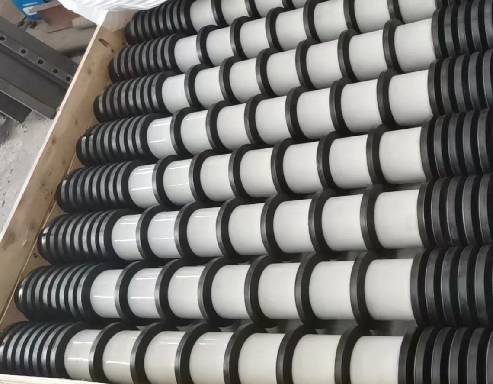 Afrikaans
Afrikaans  Albanian
Albanian  Amharic
Amharic  Arabic
Arabic  Armenian
Armenian  Azerbaijani
Azerbaijani  Basque
Basque  Belarusian
Belarusian  Bengali
Bengali  Bosnian
Bosnian  Bulgarian
Bulgarian  Catalan
Catalan  Cebuano
Cebuano  Corsican
Corsican  Croatian
Croatian  Czech
Czech  Danish
Danish  Dutch
Dutch  English
English  Esperanto
Esperanto  Estonian
Estonian  Finnish
Finnish  French
French  Frisian
Frisian  Galician
Galician  Georgian
Georgian  German
German  Greek
Greek  Gujarati
Gujarati  Haitian Creole
Haitian Creole  hausa
hausa  hawaiian
hawaiian  Hebrew
Hebrew  Hindi
Hindi  Miao
Miao  Hungarian
Hungarian  Icelandic
Icelandic  igbo
igbo  Indonesian
Indonesian  irish
irish  Italian
Italian  Japanese
Japanese  Javanese
Javanese  Kannada
Kannada  kazakh
kazakh  Khmer
Khmer  Rwandese
Rwandese  Korean
Korean  Kurdish
Kurdish  Kyrgyz
Kyrgyz  Lao
Lao  Latin
Latin  Latvian
Latvian  Lithuanian
Lithuanian  Luxembourgish
Luxembourgish  Macedonian
Macedonian  Malgashi
Malgashi  Malay
Malay  Malayalam
Malayalam  Maltese
Maltese  Maori
Maori  Marathi
Marathi  Mongolian
Mongolian  Myanmar
Myanmar  Nepali
Nepali  Norwegian
Norwegian  Norwegian
Norwegian  Occitan
Occitan  Pashto
Pashto  Persian
Persian  Polish
Polish  Portuguese
Portuguese  Punjabi
Punjabi  Romanian
Romanian  Russian
Russian  Samoan
Samoan  Scottish Gaelic
Scottish Gaelic  Serbian
Serbian  Sesotho
Sesotho  Shona
Shona  Sindhi
Sindhi  Sinhala
Sinhala  Slovak
Slovak  Slovenian
Slovenian  Somali
Somali  Spanish
Spanish  Sundanese
Sundanese  Swahili
Swahili  Swedish
Swedish  Tagalog
Tagalog  Tajik
Tajik  Tamil
Tamil  Tatar
Tatar  Telugu
Telugu  Thai
Thai  Turkish
Turkish  Turkmen
Turkmen  Ukrainian
Ukrainian  Urdu
Urdu  Uighur
Uighur  Uzbek
Uzbek  Vietnamese
Vietnamese  Welsh
Welsh  Bantu
Bantu  Yiddish
Yiddish  Yoruba
Yoruba  Zulu
Zulu conveyor frame parts
Understanding Conveyor Frame Parts An Essential Component of Material Handling Systems
Conveyor systems are vital in modern manufacturing and material handling processes, serving as the backbone for transporting goods efficiently across various industries. At the heart of these systems lies the conveyor frame, a crucial element that supports the entire structure and ensures smooth operation. This article explores the importance of conveyor frame parts, their functions, and the materials commonly used in their construction.
A conveyor frame is designed to hold the other components of the conveyor system, including belts, rollers, and drive mechanisms. Its primary purpose is to provide a stable structure that can withstand the weight of transported materials while allowing for easy movement. The design and durability of conveyor frames are critical factors in maintaining operational efficiency and minimizing downtime due to mechanical failures.
One of the essential parts of a conveyor frame is the side rail. These side rails define the conveyor's path and prevent materials from falling off during transport. Typically made of steel or aluminum, side rails can be adjusted or customized to accommodate different widths, making them versatile for various applications. The design often includes a smooth surface to reduce friction and ensure a seamless flow of goods.
Another critical component is the cross-member, which connects the side rails and adds stability to the frame. Cross-members are designed to absorb the weight and stress placed on the conveyor system, distributing the load evenly. This helps prevent bending or warping, which can lead to mechanical failures. In high-capacity operations, reinforced cross-members may be used to enhance strength and reliability.
conveyor frame parts

The mounting brackets are also vital parts of the conveyor frame, as they secure the frame to the floor or other structural elements. Proper installation of mounting brackets is essential to maintain the conveyor’s alignment and prevent vibrations that could lead to wear and tear. Brackets must be robust enough to handle the dynamic forces exerted during operation, especially in high-speed environments.
Material selection is a critical aspect of conveyor frame construction. Steel frames are common due to their strength and durability, making them suitable for heavy-duty applications. However, they can be prone to corrosion if not properly coated. On the other hand, aluminum frames are lightweight and resistant to corrosion, making them ideal for cleanroom environments or where weight restrictions apply. Some manufacturers also use stainless steel for applications that require high hygiene standards, such as in the food processing industry.
The configuration of the conveyor frame can vary significantly depending on the specific needs of an operation. Customizations may include adjustable heights, modular designs for easy assembly and disassembly, and special features like side guides or skirts to contain materials.
In conclusion, conveyor frame parts play a pivotal role in the functionality of conveyor systems. Understanding these components helps businesses select the right frames according to their operational needs, ensuring efficiency and longevity in their material handling processes. As industries continue to evolve, innovations in conveyor frame design and materials will undoubtedly enhance productivity and safety in material transportation.
-
Revolutionizing Conveyor Reliability with Advanced Rubber Lagging PulleysNewsJul.22,2025
-
Powering Precision and Durability with Expert Manufacturers of Conveyor ComponentsNewsJul.22,2025
-
Optimizing Conveyor Systems with Advanced Conveyor AccessoriesNewsJul.22,2025
-
Maximize Conveyor Efficiency with Quality Conveyor Idler PulleysNewsJul.22,2025
-
Future-Proof Your Conveyor System with High-Performance Polyurethane RollerNewsJul.22,2025
-
Driving Efficiency Forward with Quality Idlers and RollersNewsJul.22,2025





























